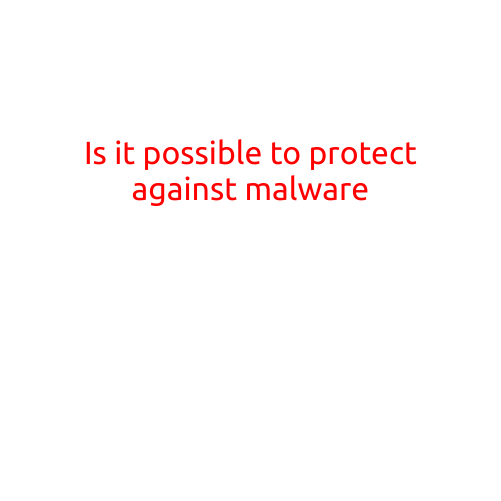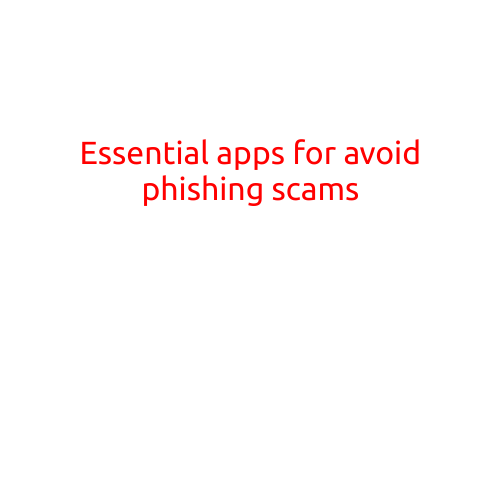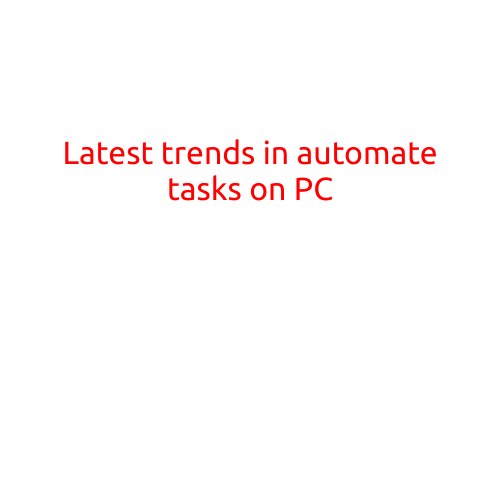
Is it Possible to Protect Against Malware?
In today’s digital age, malware has become a significant threat to online security. With the rise of cyberattacks and data breaches, it’s more important than ever to take measures to protect yourself against these malicious programs. But can you really protect yourself against malware? The answer is yes, but it requires a combination of awareness, good habits, and effective security measures.
Understanding Malware
Before discussing ways to protect against malware, it’s essential to understand what malware is. Malware is short for malicious software, which includes viruses, worms, trojans, spyware, adware, and ransomware. Malware is designed to harm or exploit your digital devices, steal your personal data, or disrupt your online activities.
The Consequences of Malware Infection
If your device is infected by malware, you may experience a range of consequences, including:
- Data breaches: Malware can steal sensitive information, such as passwords, credit card numbers, and personal identifiable information.
- System crashes: Malware can cause your device to freeze, crash, or become unusable.
- Ransom demands: Some malware, such as ransomware, can encrypt your files and demand a ransom in exchange for the decryption key.
- Slow performance: Malware can slow down your device’s performance, making it difficult to complete tasks efficiently.
- Identity theft: Malware can steal your identity and use it for fraudulent activities.
Ways to Protect Against Malware
While it’s impossible to completely eliminate the risk of malware infection, there are several ways to significantly reduce the likelihood of infection and minimize the damage if you do get infected. Here are some effective ways to protect yourself against malware:
- Use Strong Antivirus Software: Install and regularly update antivirus software that includes anti-malware and anti-ransomware protection. Top-rated antivirus software includes Norton, McAfee, and Kaspersky.
- Keep Your Operating System and Software Up-to-Date: Regularly update your operating system, browser, and software to ensure you have the latest security patches and features.
- Be Cautious with Downloads: Be wary of downloading software, files, or attachments from unknown sources. Avoid downloading files from untrusted or suspicious websites.
- Use Strong Passwords and Enable Two-Factor Authentication: Use strong, unique passwords and enable two-factor authentication to prevent unauthorized access to your accounts.
- Use a Firewall: Enable the firewall on your device to block unauthorized network traffic and prevent malware from communicating with its creators.
- Back Up Your Data: Regularly back up your important files and data to prevent loss in case your device is infected by malware.
- Use a Browser Extension: Install a browser extension that can detect and block malicious scripts, such as NoScript or uBlock Origin.
- Monitor Your Device’s Performance: Regularly monitor your device’s performance and be aware of any unusual behavior, such as slow performance or unusual error messages.
- Use a Secure Search Engine: Use a secure search engine that filters out malicious search results, such as DuckDuckGo or StartPage.
- Education and Awareness: Stay informed about the latest malware threats and scams, and be cautious when clicking on links or opening attachments from unknown sources.
Conclusion
Protecting yourself against malware requires a combination of awareness, good habits, and effective security measures. By following the tips outlined above, you can significantly reduce the risk of malware infection and minimize the damage if you do get infected. Remember, it’s always better to be safe than sorry – take the necessary steps to protect your digital devices and personal data today.





